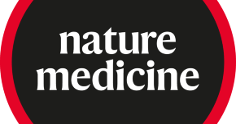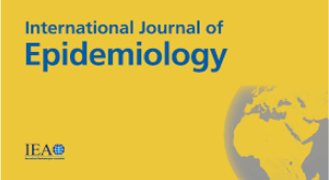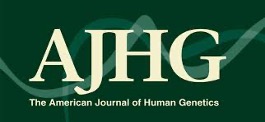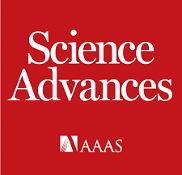By March 2021, the COVID-19 pandemic, caused by SARS-CoV-2 infection, had resulted in more than 2.8 million deaths and nearly 125 million infections worldwide. To support research and management of this crisis, the Quebec COVID-19 Biobank (BQC19) was created in Quebec, Canada, with the goal of collecting, storing, and sharing biological samples and clinical data. This biobank, covering a wide range of clinical manifestations of the disease, includes plasma, serum, blood cell, and DNA/RNA samples, as well as in-depth analyses of the genome, transcriptome, proteome, and metabolome. Managed under an ethical and legal framework approved by local health authorities, BQC19 aims to provide crucial data to the scientific community to better understand and combat the COVID-19 pandemic.
Publications


Effective responses to the COVID-19 pandemic require novel solutions for research and responsible data sharing. Biobanking presents itself as a key priority in furthering our understanding of COVID-19. In this article, we propose a tripartite approach to consent to create resources for research relating to COVID-19. The approach aims to link three levels of participation: COVID-19 patients, respiratory/infectious disease patients, and longitudinal study participants. We explore the potential approaches that can be taken to consent processes with these three participant groups. We furthermore describe an access model for both single-site and multi-site data and sample storage. Through dealing with these topics at a high level, the model may be adapted to local legal and ethical requirements while still pursuing its ultimate goal: the creation of a research infrastructure that supports transparent, strong, and open science.

This two-sample Mendelian randomization study assessed whether genetically elevated 25-hydroxy vitamin D (25OHD) levels causally reduce COVID-19 susceptibility or severity. Using genetic instruments from a GWAS of 443,734 individuals and outcome data from the COVID-19 Host Genetics Initiative (up to 14,134 cases and 1.28 million controls), the analysis found no significant association between increased 25OHD levels and COVID-19 susceptibility (OR = 0.95), hospitalization (OR = 1.09), or severe disease (OR = 0.97). These findings were consistent across multiple analytic methods and sensitivity analyses. Results do not apply to individuals with vitamin D deficiency but suggest no causal protective role of vitamin D in the general population against COVID-19, calling into question the prioritization of vitamin D supplementation in COVID-19 prevention strategies.

To identify circulating proteins influencing Coronavirus Disease 2019 (COVID-19) susceptibility and severity, we undertook a two-sample Mendelian randomization (MR) study, rapidly scanning hundreds of circulating proteins while reducing bias due to reverse causation and confounding. In up to 14,134 cases and 1.2 million controls, we found that an s.d. increase in OAS1 levels was associated with reduced COVID-19 death or ventilation (odds ratio (OR) = 0.54, P = 7 × 10−8), hospitalization (OR = 0.61, P = 8 × 10−8) and susceptibility (OR = 0.78, P = 8 × 10−6). Measuring OAS1 levels in 504 individuals, we found that higher plasma OAS1 levels in a non-infectious state were associated with reduced COVID-19 susceptibility and severity. Further analyses suggested that a Neanderthal isoform of OAS1 in individuals of European ancestry affords this protection. Thus, evidence from MR and a case–control study support a protective role for OAS1 in COVID-19 adverse outcomes. Available pharmacological agents that increase OAS1 levels could be prioritized for drug development.

Dysregulated immune profiles have been described in symptomatic patients infected with SARS-CoV-2. Whether the reported immune alterations are specific to SARS-CoV-2 infection or also triggered by other acute illnesses remains unclear. We performed flow cytometry analysis on fresh peripheral blood from a consecutive cohort of (a) patients hospitalized with acute SARS-CoV-2 infection, (b) patients of comparable age and sex hospitalized for another acute disease (SARS-CoV-2 negative), and (c) healthy controls. Using both data-driven and hypothesis-driven analyses, we found several dysregulations in immune cell subsets (e.g., decreased proportion of T cells) that were similarly associated with acute SARS-CoV-2 infection and nonCOVID-19-related acute illnesses. In contrast, we identified specific differences in myeloid and lymphocyte subsets that were associated with SARS-CoV-2 status (e.g., elevated proportion of ICAM-1+ mature/activated neutrophils, ALCAM+ monocytes, and CD38+CD8+ T cells). A subset of SARS-CoV-2–specific immune alterations correlated with disease severity, disease outcome at 30 days, and mortality.

COVID-19 a suscité des interrogations quant à leur impact sur la susceptibilité à l’infection et la sévérité de la maladie. Cette étude a utilisé la randomisation mendélienne pour évaluer l’effet de la diminution génétiquement déterminée des niveaux sériques d’ACE sur ces risques, tout en minimisant les biais des études observationnelles. L’analyse de variants génétiques associés aux niveaux d’ACE dans plusieurs cohortes (ORIGIN, AGES et l’initiative COVID-19 Host Genetics) a révélé qu’une diminution des niveaux d’ACE n’était pas significativement liée à un risque accru d’infection, d’hospitalisation ou de formes sévères de COVID-19. Ces résultats, confirmés par plusieurs analyses de sensibilité, suggèrent que la prise d’IEC ne modifie pas la susceptibilité ni l’évolution clinique de la COVID-19, et qu’il n’existe pas de justification génétique pour interrompre ces traitements durant la pandémie.

Severe acute respiratory syndrome coronavirus-2 (SARS-CoV-2) causes coronavirus disease 2019 (COVID-19), a respiratory illness that can result in hospitalization or death. We used exome sequence data to investigate associations between rare genetic variants and seven COVID-19 outcomes in 586,157 individuals, including 20,952 with COVID-19. After accounting for multiple testing, we did not identify any clear associations with rare variants either exome wide or when specifically focusing on (1) 13 interferon pathway genes in which rare deleterious variants have been reported in individuals with severe COVID-19, (2) 281 genes located in susceptibility loci identified by the COVID-19 Host Genetics Initiative, or (3) 32 additional genes of immunologic relevance and/or therapeutic potential. Our analyses indicate there are no significant associations with rare protein-coding variants with detectable effect sizes at our current sample sizes. Analyses will be updated as additional data become available, and results are publicly available through the Regeneron Genetics Center COVID-19 Results Browser.

A recent report found that rare predicted loss-of-function (pLOF) variants across 13 candidate genes in TLR3- and IRF7dependent type I IFN pathways explain up to 3.5% of severe COVID-19 cases. We performed whole-exome or wholegenome sequencing of 1,864 COVID-19 cases (713 with severe and 1,151 with mild disease) and 15,033 ancestry-matched population controls across 4 independent COVID-19 biobanks. We tested whether rare pLOF variants in these 13 genes were associated with severe COVID-19. We identified only 1 rare pLOF mutation across these genes among 713 cases with severe COVID-19 and observed no enrichment of pLOFs in severe cases compared to population controls or mild COVID-19 cases. We found no evidence of association of rare LOF variants in the 13 candidate genes with severe COVID-19 outcomes.

Despite advances in COVID-19 management, identifying patients evolving toward death remains challenging. To identify early predictors of mortality within 60 days of symptom onset (DSO), we performed immunovirological assessments on plasma from 279 individuals. On samples collected at DSO11 in a discovery cohort, high severe acute respiratory syndrome coronavirus 2 (SARS-CoV-2) viral RNA (vRNA), low receptor binding domain–specific immunoglobulin G and antibody-dependent cellular cytotoxicity, and elevated cytokines and tissue injury markers were strongly associated with mortality, including in patients on mechanical ventilation. A three-variable model of vRNA, with predefined adjustment by age and sex, robustly identified patients with fatal outcome (adjusted hazard ratio for log-transformed vRNA = 3.5). This model remained robust in independent validation and confirmation cohorts. Since plasma vRNA’s predictive accuracy was maintained at earlier time points, its quantitation can help us understand disease heterogeneity and identify patients who may benefit from new therapies.

The genetic make-up of an individual contributes to the susceptibility and response to viral infection. Although environmental, clinical and social factors have a role in the chance of exposure to SARS-CoV-2 and the severity of COVID-191,2, host genetics may also be important. Identifying host-specific genetic factors may reveal biological mechanisms of therapeutic relevance and clarify causal relationships of modifiable environmental risk factors for SARS-CoV-2 infection and outcomes. We formed a global network of researchers to investigate the role of human genetics in SARS-CoV-2 infection and COVID-19 severity. Here we describe the results of three genome-wide association meta-analyses that consist of up to 49,562 patients with COVID-19 from 46 studies across 19 countries. We report 13 genome-wide significant loci that are associated with SARS-CoV-2 infection or severe manifestations of COVID-19. Several of these loci correspond to previously documented associations to lung or autoimmune and inflammatory diseases3–7. They also represent potentially actionable mechanisms in response to infection. Mendelian randomization analyses support a causal role for smoking and body-mass index for severe COVID-19 although not for type II diabetes. The identification of novel host genetic factors associated with COVID-19 was made possible by the community of human genetics researchers coming together to prioritize the sharing of data, results, resources and analytical frameworks. This working model of international collaboration underscores what is possible for future genetic discoveries in emerging pandemics, or indeed for any complex human disease.